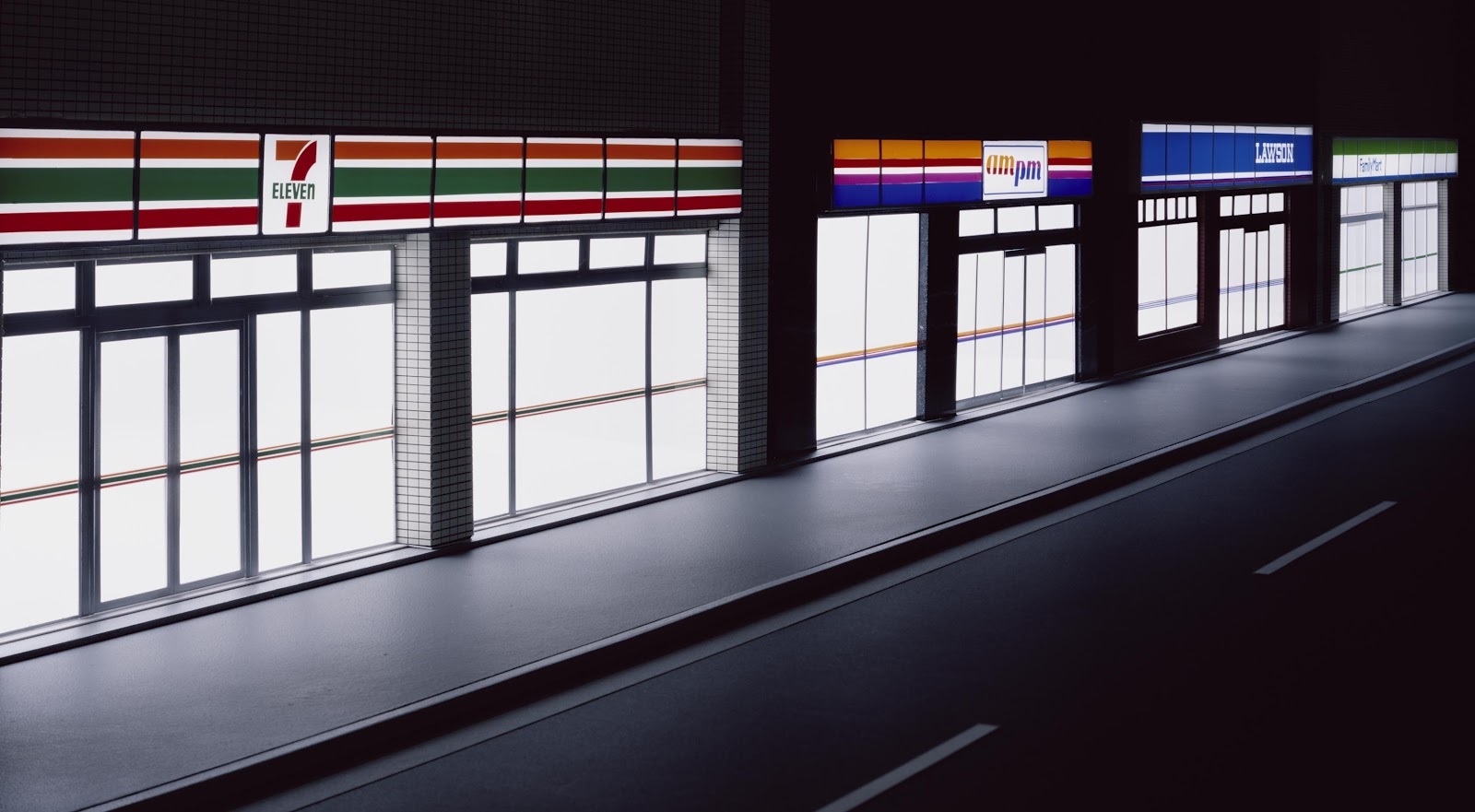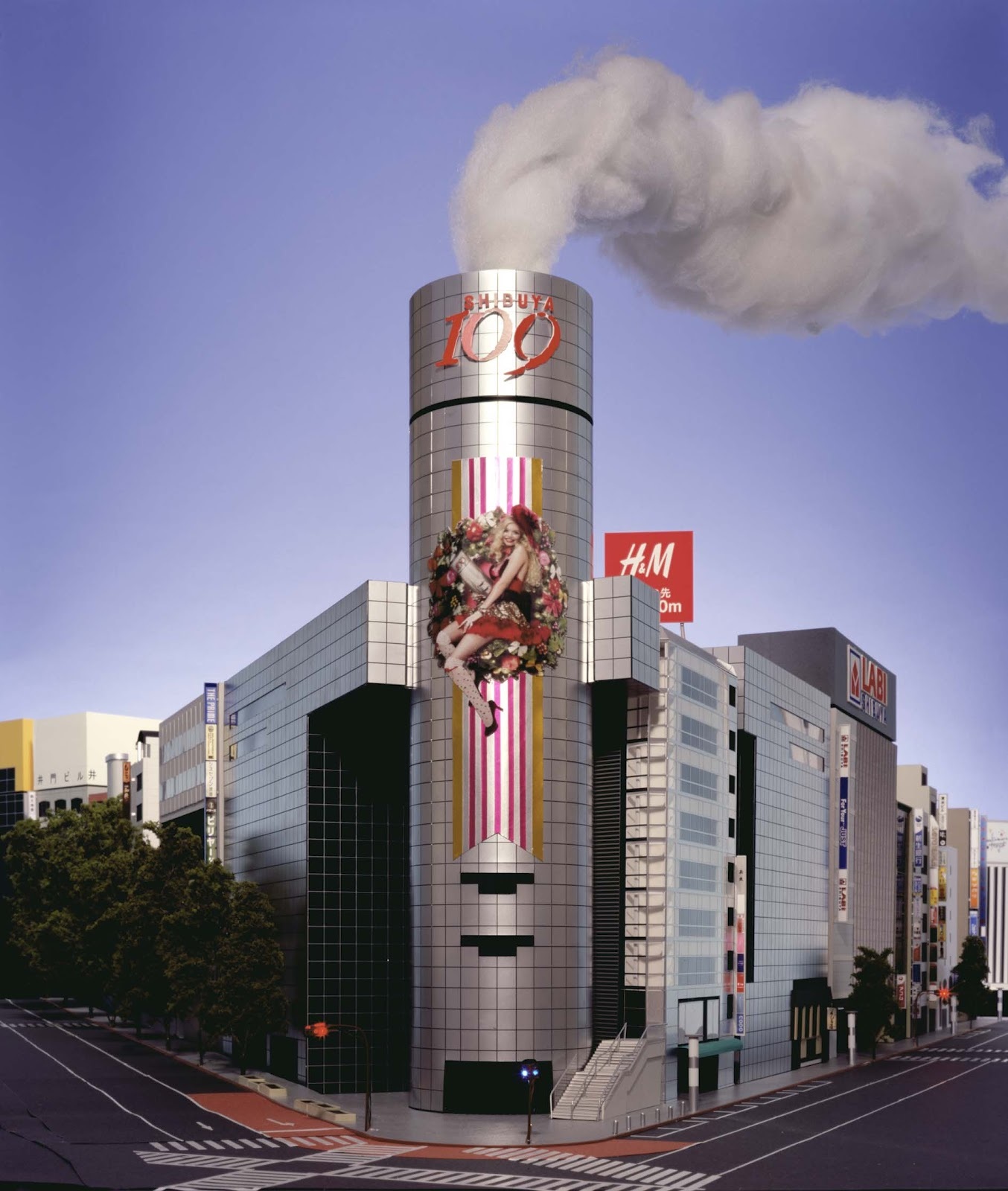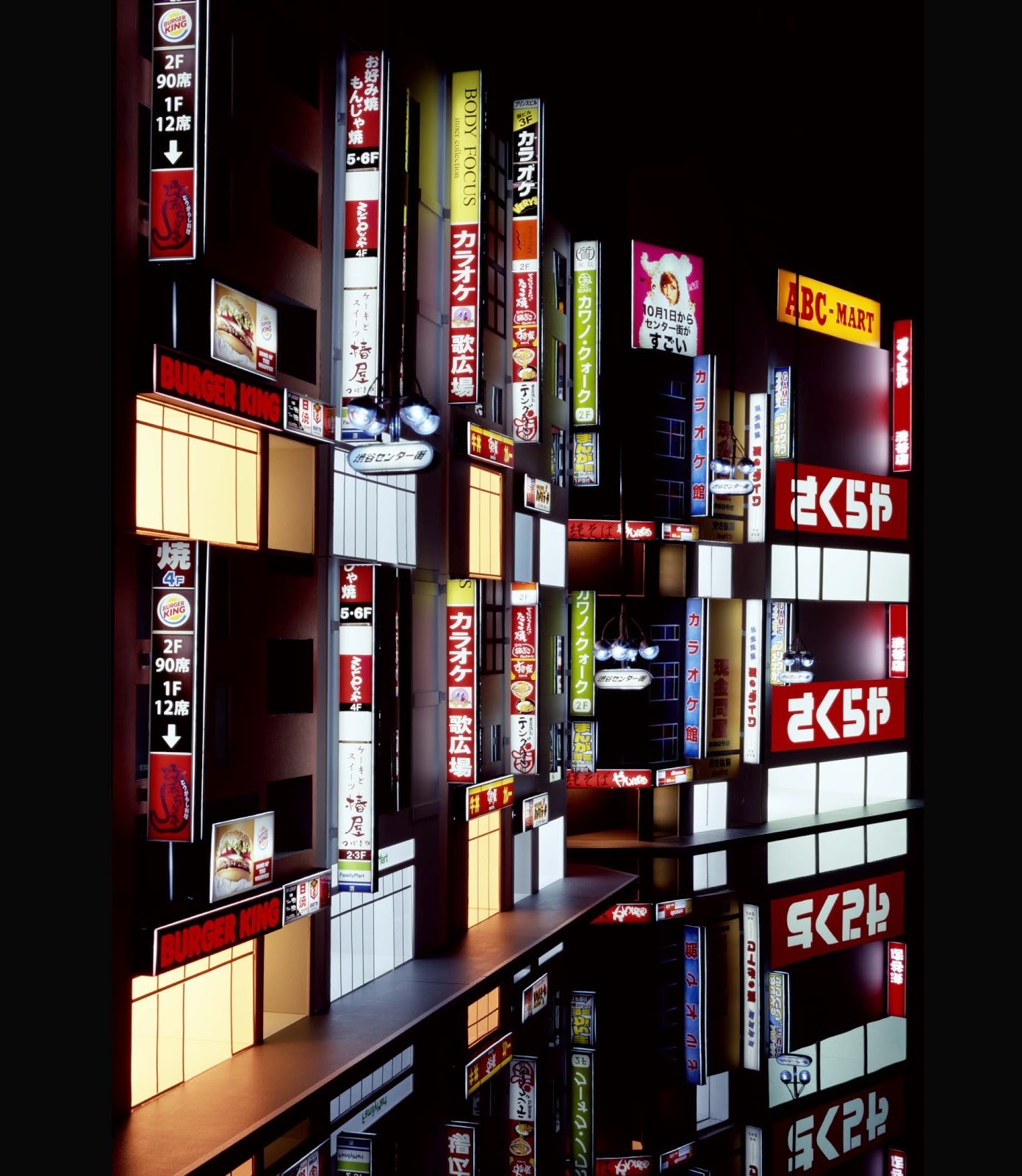鈴木伸吾「Floating Island」
That we are holding Shingo Suzuki's exhibition at Zen Foto Gallery at the same time as an exhibition of Thomas Demand at the Tokyo Museum of Contemporary Art is pure coincidence. But it is a nice opportunity to compare the works of two artists, both born in 1964, each also born in one of the world's powerhouse manufacturing countries - Germany and Japan respectively. Each make photographs of models they construct only to destroy those models once the photograph is complete.
What they have constructed is an image of a model of a place. Photography purports to present reality. Most viewers do not perceive that Suzuki's photographs are of scale models. This is apparent on very careful inspection of the works, but even careful inspection is not enough to be sure, the details have been so finely worked out. Incidentally, he painstakingly measures everything in the work before construction - the entire process of creating "Shibuya Island" took two years. While measuring the dimensions of the JR Yamanote Line train for "Transport" he got many suspicious looks from fellow passengers and guards.
The resulting work is a highly faithful rendition of one aspect of reality – a hyper reality – whilst the entire construct remains unreal. This highlighted aspect also carries some significance. In Demand's case he chooses some places of historical or cultural significance; Saddam Hussein's hiding place, or a room in which a plot was hatched to kill Hitler. Suzuki chooses aspects of modern Japanese life; the commuter train in “Transport”; the expressway in “Yotsugi”; the encroachment of American culture in “Miss Perry in Shibuya”. Yet there is no bitterness. The vacant Yamanote line train carriage of “Transport” is light, airy, beautiful. His newest works, “Miss Perry in Shibuya” and “Shibuya Island”, immediately give a sense of fond nostalgia. These streets of Shibuya have already changed greatly in the year since they were created.
Demand's work feels heavier, both in subject matter and in execution. The message is more evident. The unreality is more evident. His subjects extend broadly, from the Oval Office to a remote underground grotto. The overall result is darker and starker. Suzuki captures an aspect of reality in the great metropolis of Tokyo. I have lived for three years with a large print of “Transport” dominating my living room; and have enjoyed it every day. I don't think that would have been possible with any of Demand`s works.
Both are fascinating, but my personal preference is for Suzuki. Demand's works carry their concept rather heavily and the end result is less appealing. But the great thing is that you can see both bodies of work and decide for yourself.
Shingo Suzuki “Floating Island” at Zen Foto, Roppongi, Tokyo until 2nd June 2012
Thomas Demand “Thomas Demand” at MOT Tokyo, until 8th July 2012




